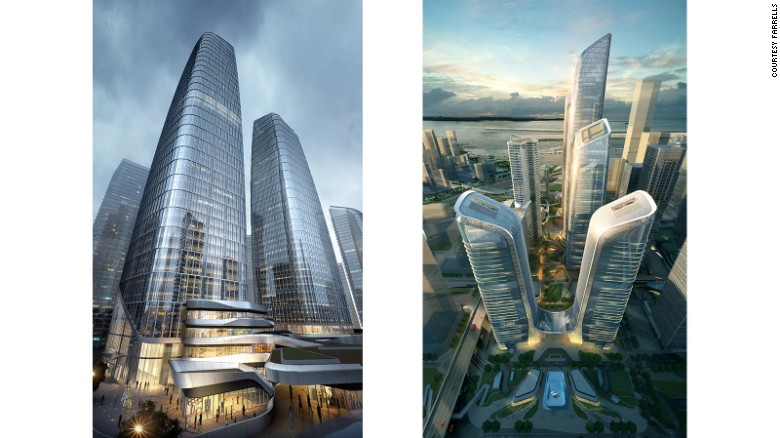The skyscraper capital of China

Shenzhen is famous for it,s numerous skyscrapers. Photo courtesy: The Guardian
(Web Desk) - As one passes through the sleepy little districts of outer Hong Kong a wall of skyscrapers suddenly appear into a distance. This is Shenzhen, a major Chinese city that seems to have a never ending appetite for skyscrapers.
According to a report by CNN Shenzhen was responsible for 11 of the 128 buildings over 200 meters that were completed in the world last year. This was more than the entire United States, and almost twice as many as any other Chinese city.
Shenzhen’s relationship with high buildings go back decades. It was in the 1980s that China’s reformist leader, Deng Xiaoping declared that the area would become a special economic zone and allowed companies to operate over there with fewer restrictions than were generally put on firms in the country’s planned economy.
.jpg)
Shenzhen’s skyline is filled with skyscrapers peeking through the clouds . Photo courtesy: CNN
As companies rushed into the area to set up shop, Shenzhen turned from an unknown little fishing village into a major production hub with numerous tall buildings dotting the city’s landscape. The city’s geography also played a part. Located between the border of Hong Kong and the mountains, the city was forced to grow upwards rather than outwards due to a lack of space. A network of rails and subway lines have only increased construction and development in the narrow strip of city land.
.jpg)
A peculiarly designed skyscraper in the city. Photo courtesy: CNN
Nowadays Shenzhen has moved past its manufacturing origins and has rapidly become a center for service industries such as technology and design. The city is home to massive firms such as Tencent,a major Chinese investment holding company which has itself build two skyscrapers in the city, and thousands of smaller businesses dealing in media, investment etc. This has only fueled Shenzhen’s craze for high buildings as such businesses do not require production centers but do require office space which is provided by skyscrapers.
.jpg)
A Shenzhen skyscraper from the top. Photo courtesy: CNN
As Shenzhen continues to grow market analysts are fearing that China may be overbuilding in big cities.
There may be some truth to these claims as the office vacancy rate in the Chinese capital Beijing is predicted to rise to 13% at the end of 2019 (up from 8% at the end of 2016) according to a report by Colliers International. In Shanghai, another major Chinese hub, the situation may have become even worse as the 632-meter Shanghai Tower (the tallest building in China), has been mostly empty since its opening in 2015.

A group of skyscrapers together in Shenzhen. Photo courtesy: CNN
However, despite this the skyscraper boom in Shenzhen seems to show no signs of slowing down as in addition to a present 49 skyscrapers a further 48 planned ones are under construction, according to data provided by CTBUH.The reason for this may simply be the city’s currently booming economy. With the highest per capita GDP of any major Chinese city, Shenzhen is seeing increasing land prices which may be leading to the present building boom.


